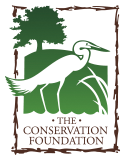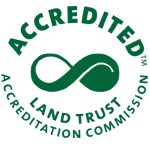Navigating roads is easy for most of us, but wild animals often experience them as troubling challenges. To us, roads signify connection and escape, but for animals they can block migration, disrupt habitat, and even spell death. Conservation protects and preserves wildlife habitats and corridors. So, how can conservation best deal with roads? There is also the burgeoning science of road ecology. How can conservation take advantage of that? And what does this all mean for wildlife? Let’s explore these issues in this blog.
Roads can block migration patterns. When you think about migration, it is not just large animals like elk which can go 20 – 100 miles or monarch butterflies that can travel 3,000 miles. It can also include creatures like the Wood Frog which only migrates 435 feet back to their pools of birth and exposes itself to the dangers of vehicle strikes and de-icing chemicals on roads. Roads can create barriers and present physical challenges to non-migratory animals.
Interestingly, some animals have learned to adapt to roads in their living area. Chicago’s coyotes have become so car-savvy that they look both ways before crossing the street. Swallows now have shorter wings for quicker direction change, which helps to avoid collisions.
Conservation is now at the forefront of dealing with roads. Through well-planned preservation of land, the negative effects of roads on habitats and animals are mitigated. These efforts are now being promoted and formalized through the science of road ecology. Road ecology is the study of the ecological effects (both positive and negative) of roads and highways (public roads) and the means to mitigate these effects. These effects may include local effects, such as noise, water pollution, habitat destruction/disturbance, and local air quality; and the wider environmental effects of transport such as habitat fragmentation, ecosystem degradation, and climate change from vehicle emissions. The design, construction, and management of roads, parking, and other related facilities as well as the design and regulation of vehicles can change their effect. Examples of successful conservation-oriented road ecology implementations are:
- Wildlife crossings: These allow animals to safely cross roads, which can reduce roadkill and connect habitat areas. Wildlife crossings can include overpasses, culverts, viaducts, and underpass tunnels. In Illinois within the Shawnee National Forest, biologists cordon off “Snake Road” to protect copperheads, rattlers, and cottonmouths.
- Fencing: Fencing can be used to guide wildlife toward overpasses and underpasses.
- Road construction practices: Sustainable road construction practices can help maintain ecological balance and reduce impacts on insect populations. These practices include preserving existing insect habitats and implementing green infrastructure elements.
- Stormwater management: Sustainable infrastructure can help minimize pollution and negative impacts on water ecosystems. This can include implementing vegetated swales, permeable pavements, and rainwater harvesting systems. Green roads use materials that help infiltrate water rather than run-off.

A bobcat utilizes a round culvert to navigate under Interstate 40. Photo courtesy of National Parks Conservation Association and Wildlands Network.
And this is considered serious stuff. In the $1.2 trillion infrastructure bill passed by Congress in November 2021 is a provision: a program allocating $350 million for wildlife crossings, fences, and other road-ecology interventions. In his book “Crossings,” Ron Goldfarb states that this is “easily the largest investment on animal-friendly infrastructure in American history.” For more information on road ecology, I highly recommend that book.
The Conservation Foundation has been addressing roads from two perspectives: stormwater runoff and winter salt.
Roads can be conduits for stormwater and waste into our rivers. Many people think that water pollution is caused by big business or large government facilities – places with pipes leading into the river. These are known as “point source” polluters. However, in recent years these sources have greatly reduced their negative impact on water quality. As a result, stormwater runoff is now one of the leading causes of surface water pollution in DuPage County, according to the Illinois Environmental Protection Agency. The Storm Drain Stenciling program has been active in DuPage County since 1992. Sometimes a simple reminder is all we need to help us do the right thing. That’s the premise behind storm drain stenciling. Volunteers stencil “Dump No Waste – Drains to River” on storm drains in the hopes that seeing this message will make people a little more careful about what they allow to enter their storm drains.
Throughout northeastern Illinois, rock salt (also called winter salt) is used to maintain safe driving conditions during and after winter storms. Salt is also applied to parking lots, sidewalks, and driveways. As snow and ice are melted, the dissolved salt is carried in the melt water to local streams and lakes or is infiltrated into the groundwater. The salt can also remain on the landscape or in detention basins and storm sewers long after the winter, providing a constant source of chlorides to our local waterways every time it rains well into the summer. Many species of amphibian, including frogs, breed and lay eggs in roadside ditches.
The Salt Smart Collaborative is coordinated through The Conservation Foundation and supported by the Lower Des Plaines River Watershed Group, the Lower DuPage River Watershed Coalition, and the Northwest Water Planning Alliance as a place to learn, share and join forces to reduce the amount of chlorides reaching our local rivers and streams to keep people safe and protect our local water quality.
Looking to the future, wildlife agencies are considering efforts to collect and analyze roadkill data. By analyzing (possibly with Artificial Intelligence) the location, date/time, and species of roadkill, they can better understand how to manage roads for habitat protection.
Ready to contribute to conservation efforts that proactively deal with roads? Well, that is what The Conservation Foundation does every day. We can all do more together than we can alone. Join our collective momentum – become a member today! And help a frog safely get to the other side of the road.
Feel free to comment on this blog with additional ideas you have on how conservation can deal with roads.
By Steve Stawarz, Oak Brook
DuPage County Advisory Council Member




